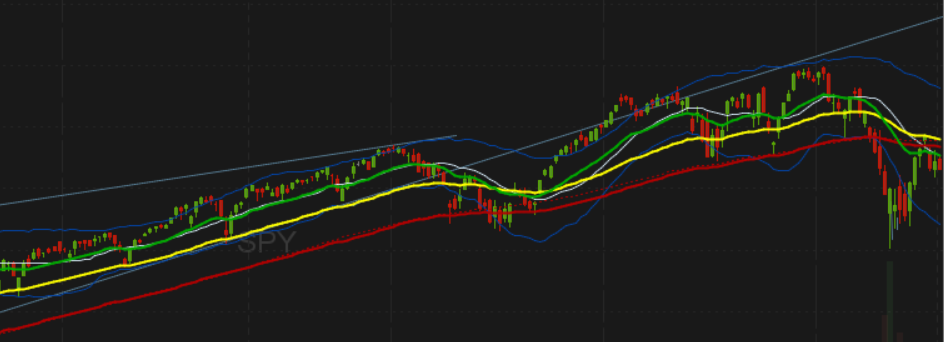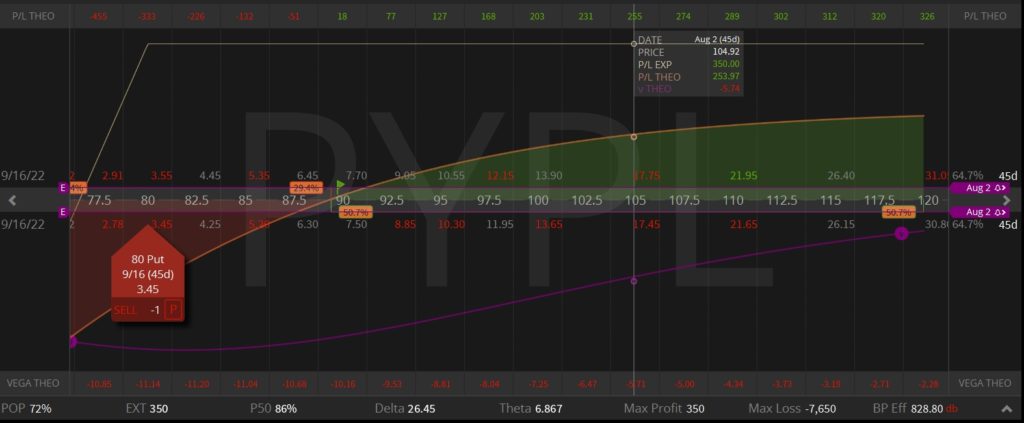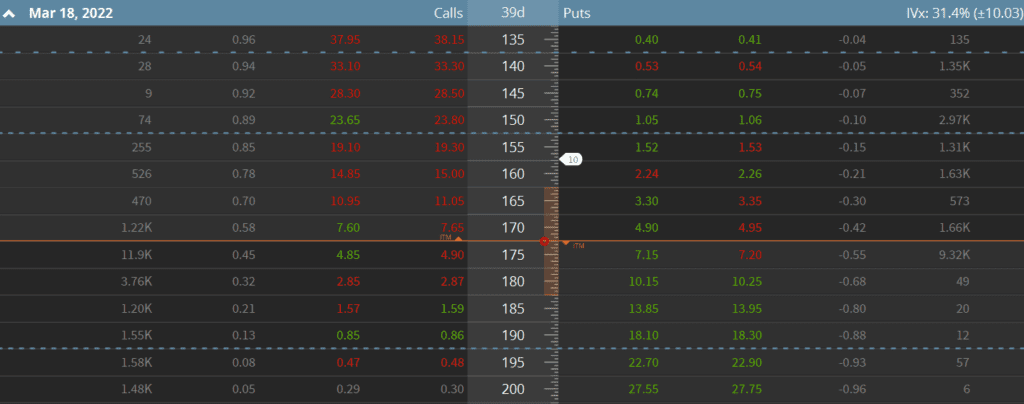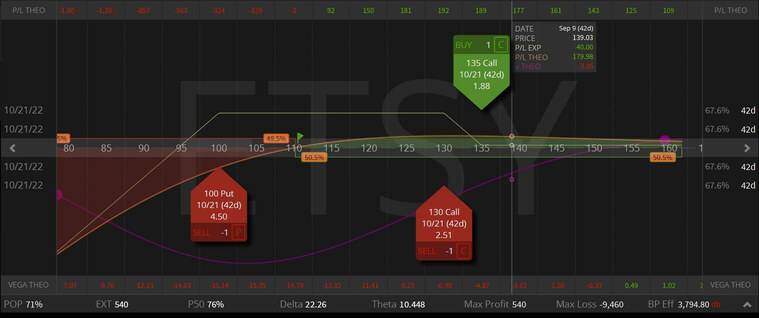Cash Secured Puts for Beginners
The images on this post are from the Tastyworks trading platform. I am a personal user of the tastyworks trading platform and believe it is a great choice for anyone who will be trading options, specifically selling options. They not only provide a high quality product but their support team is amazing. I have emailed them multiple times and receive an answer usually in less than 24 hours! If you have never tried it click this link and give it a try. This is my personal reference link for me and will support this blog.
Table of Contents
ToggleWhat Are Stock Options
Options are financial derivatives that give buyers the right, but not the obligation, to buy or sell an underlying asset at an agreed-upon price and date.
Put Options
Options come in two forms and to make things easy we are going to focus on my favorite kind of option, the put! The buyer of a put option gives you the right, but not the obligation, to sell a stock at a specific price (known as the strike price) by a specific date – at the option’s expiration. For this right, the put buyer pays the seller a sum of money called a premium. Unlike stocks, which can exist indefinitely, an option ends at expiration and then is settled, with some value remaining or with the option expiring completely worthless.
So what exactly does all that mean?
It means as the buyer of a put option; you are willing to sell 100 shares of a stock at a certain price on a certain date or expiration.
As the seller of a put option, you are obligated to buy those same shares at the strike price on the predetermined date or expiration. Let’s look at an example…
Person A has 100 shares of stock XYZ, and they are concerned that the market may start going down. To protect their downside risk, they buy a $95 put for $1.50 x 100 shares or $150. If the stock falls below $95, person A can sell their 100 shares for $95 a share, no matter how far the stock falls. For that added protection, though it costs them $150 for every 100 shares they own.
Person B was the seller of the $95 put bought by person A. Person B received the $150 for the obligation of buying XYZ at $95 a share. If the price of XYZ stays above $95 at expiration, the option expires worthless and person B keeps the $150. If the price falls below $95, person B must now purchase the 100 shares at $95 a share while still keeping the $150 received in credit when selling the put.
Here you can see an option chain and it can be very confusing at first. Let me break it down for you. If you look down the middle, you will see numbers in increments of 5’s. These are the strike prices for the underlying stock. The red dot halfway down is the current price of the underlying. On the right side, you have the Puts, and on the left side, you have the calls. The top left shows you the expiration date of Mar 18, 2022, which today is 39 days away. Let’s focus on the right side or the Puts. We are only going to look at the first 2 columns are green and red. Those are the bid and ask prices for each specific strike price. Let us focus on the 160 strike price. You can see that you can currently buy or sell the 160 put for between $2.24 – $2.26. If you were to short (sell) the 160 put, you would receive approx $225 for the obligation to buy this stock at $160 per share. Then, if the stock were to stay above $160, your option contract would expire worthless in 39 days and you would keep the $225. If the price were to drop below 160, you would be the proud owner of 100 shares with a cost basis of $157.75 ($160 – $2.25).
Puts and Calls
There is another type of option called the call. They work opposite of how puts work. The buyer of a call hopes the price of the underlying stock goes up, and the seller hopes that the price of the underlying stock goes down.
Buying Vs Selling Options
Buying an option is called being long an option contract. Selling an option is called being short an option contract. Shorting options are considered by some to be more risky due to them having unlimited risk and limited upside potential for profit. Buying options at first may seem like a better purchase with their limited loss and unlimited profit potential. The problem with buying options compared to selling is that you must be correct in both direction and in timing. The only way for you to be profitable buying a put is that the underlying price must go down before the option contract expires. On the other hand, the seller of that same option will make money if the price of the underlying goes up, if the price stays the same, or if the price falls but remains above the strike price of the option contract at expiration.
Are Cash Secured Puts a Good Idea?
Cash secured puts are a great way to own a stock at a predetermined price. It is essentially a limit order that you are paid to place. If you set a limit order to buy 100 shares of XYZ at $95 and the price never falls low enough to activate that order, you lose nothing, but you also gain nothing. Instead, imagine that you were to sell a $95 put to expire in 30 days. You would receive a credit,using the example above, of $150 for the obligation to buy 100 shares of XYZ at $95 a share. If in 30 days, when the option expires, the stock is above $95, your option would expire worthless and you would keep that money. If the price falls and you end up owning the shares, you would own 100 shares of XYZ with a cost basis of $93.50 a share. How is that possible? Let’s look at calculating cost basis.
Calculating Cost Basis
Calculating cost basis on assigned options can seem difficult at first, but really is quite simple. We will continue to use the example above of selling a $95 strike on XYZ for $1.50. Each contract you buy or sell is equivalent to 100 shares of the underlying stock. If you receive a credit of $1.50 on an option you sold, you are actually receiving $1.50 x 100 shares or $150. Buying 100 shares of XYZ at $95 would cost you $9,500. Being assigned 100 shares of XYZ at a price of $95 would cost you ($9,500 – $150 = $9,350) or $93.50 a share.
Which Broker Should I Use to Sell Puts?
I only meant this blog to be a starting point for options trading. If you are interested in getting started, I suggest opening an account with Tastytrade. They have many training videos and offer full margin to everyone if that is something you are interested in. Please post questions below as options can seem overwhelming at first.











I pay a vizit day-to-day a few web sites and sies tto read content,
howwver this wesite offeres quality based content.
Thankyou I appreciate that very much! If there is anything specific you are looking for let me know!